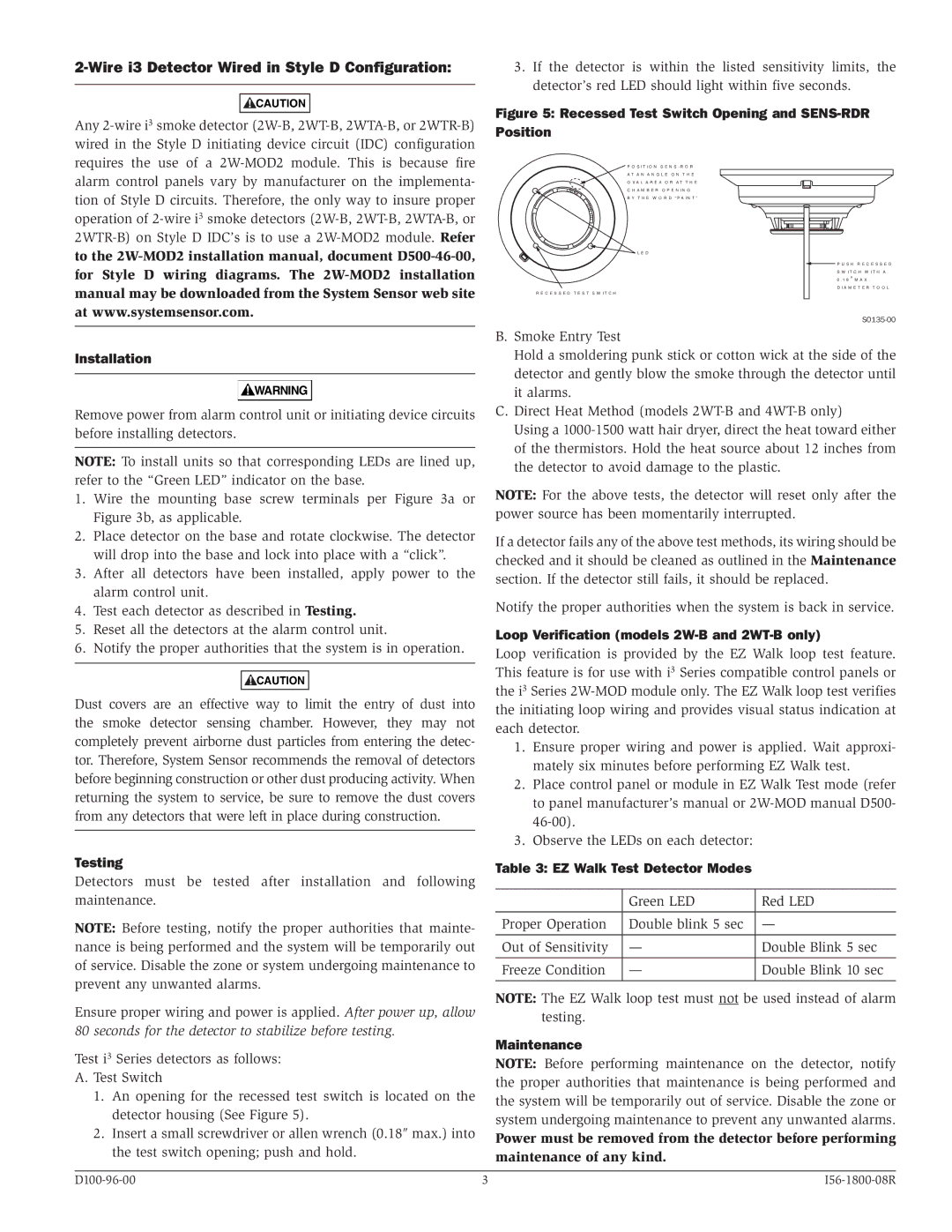4WT-B, 2WT-B, 4W-B specifications
The System Sensor 4W-B, 2WT-B, and 4WT-B are advanced fire detection devices designed to enhance safety and ensure rapid response in case of a fire. These detectors are essential components in modern fire alarm systems, renowned for their reliability and technological prowess.The 4W-B is a photoelectric smoke detector that uses advanced sensing technology to identify the presence of smoke in its environment. Its design includes a highly sensitive photoelectric chamber that absorbs light reflected by smoke particles. This technology enables the 4W-B to respond quickly to smoldering fires, which typically produce large amounts of smoke before flames are visible. One of its standout features is its built-in sounder, which provides an audible alert upon detection, ensuring the occupants are promptly notified.
The 2WT-B and 4WT-B models incorporate both smoke detection and heat sensing features, making them ideal for various environments, including commercial spaces and industrial applications. The 2WT-B, classified as a two-wire technology device, offers simple installation without the need for additional wiring. It integrates seamlessly with fire alarm control panels, allowing for efficient monitoring and maintenance.
The 4WT-B variant is equipped with multiple sensing technologies, combining heat detectors and photoelectric sensing. This dual approach enhances its ability to detect various types of fires, whether they are fast-flaming or smoldering. Its advanced algorithms minimize false alarms, ensuring that only genuine threats trigger alerts.
All three models feature an array of characteristics that make them user-friendly and efficient. They come with adjustable sensitivity settings, allowing customization based on specific environmental conditions. The detectors’ LED indicators provide visual status updates, making it easier for maintenance personnel to monitor their functionality. Additionally, their robust design ensures durability, suitable for both indoor and outdoor applications.
Overall, the System Sensor 4W-B, 2WT-B, and 4WT-B fire detectors represent a significant advancement in fire safety technology. Their combination of reliability, versatility, and ease of installation positions them as preferred choices for architects, engineers, and safety professionals seeking to protect lives and property effectively. With these devices, users can have peace of mind knowing they have a sophisticated fire detection system at their disposal.

